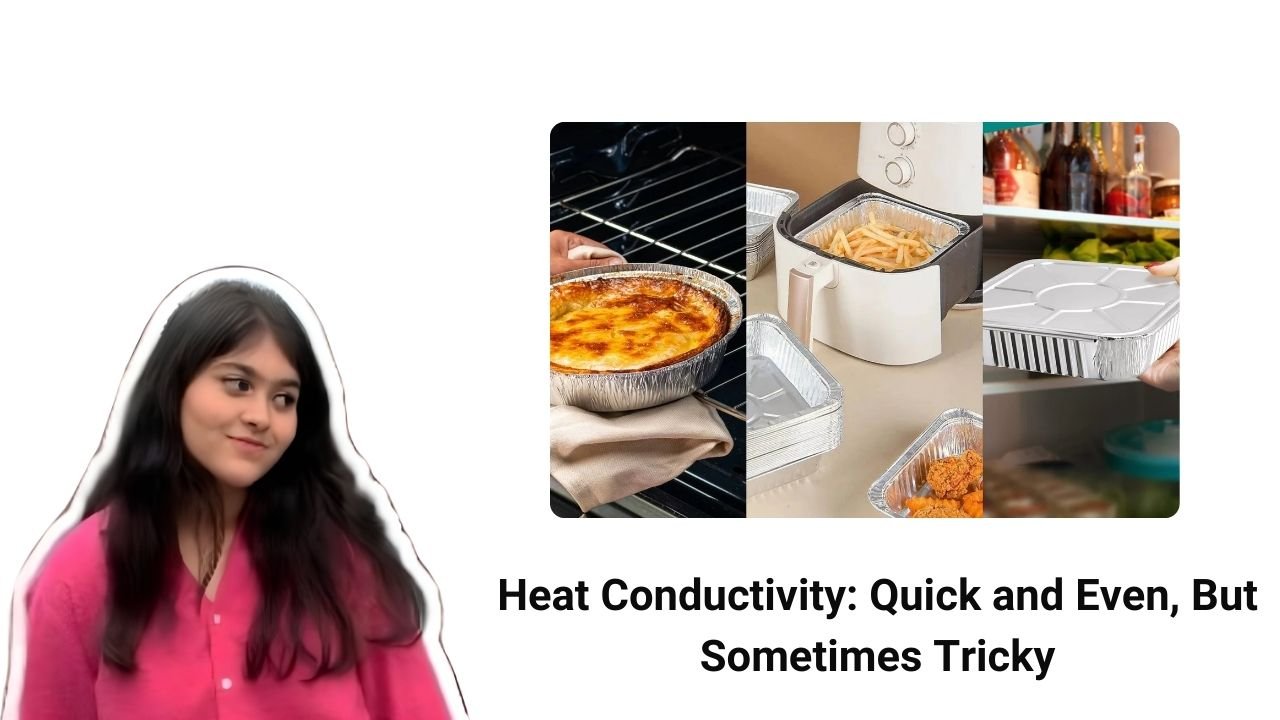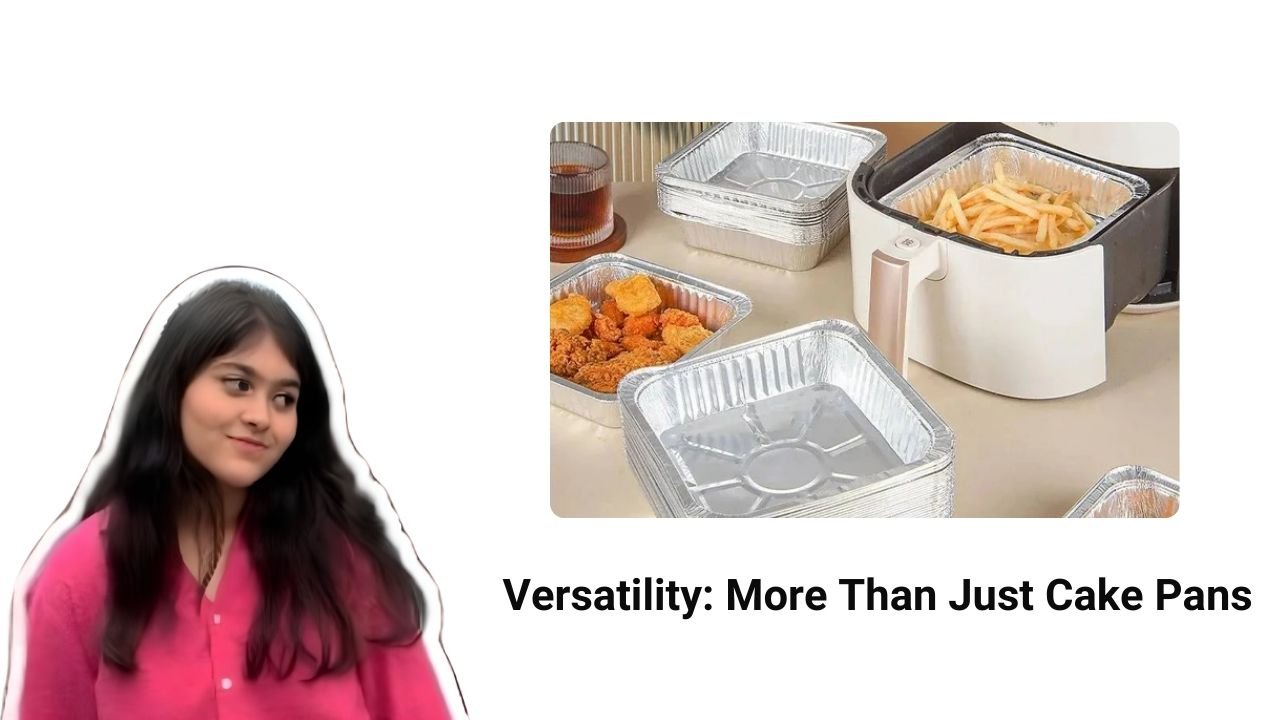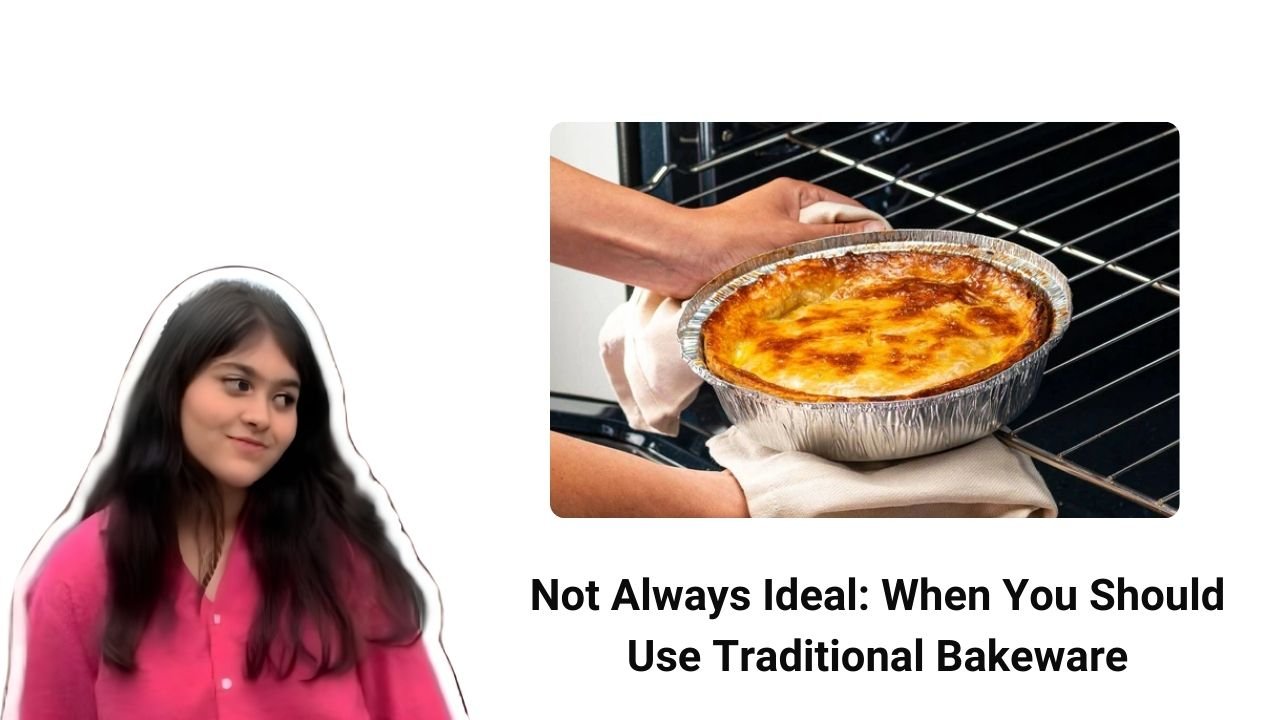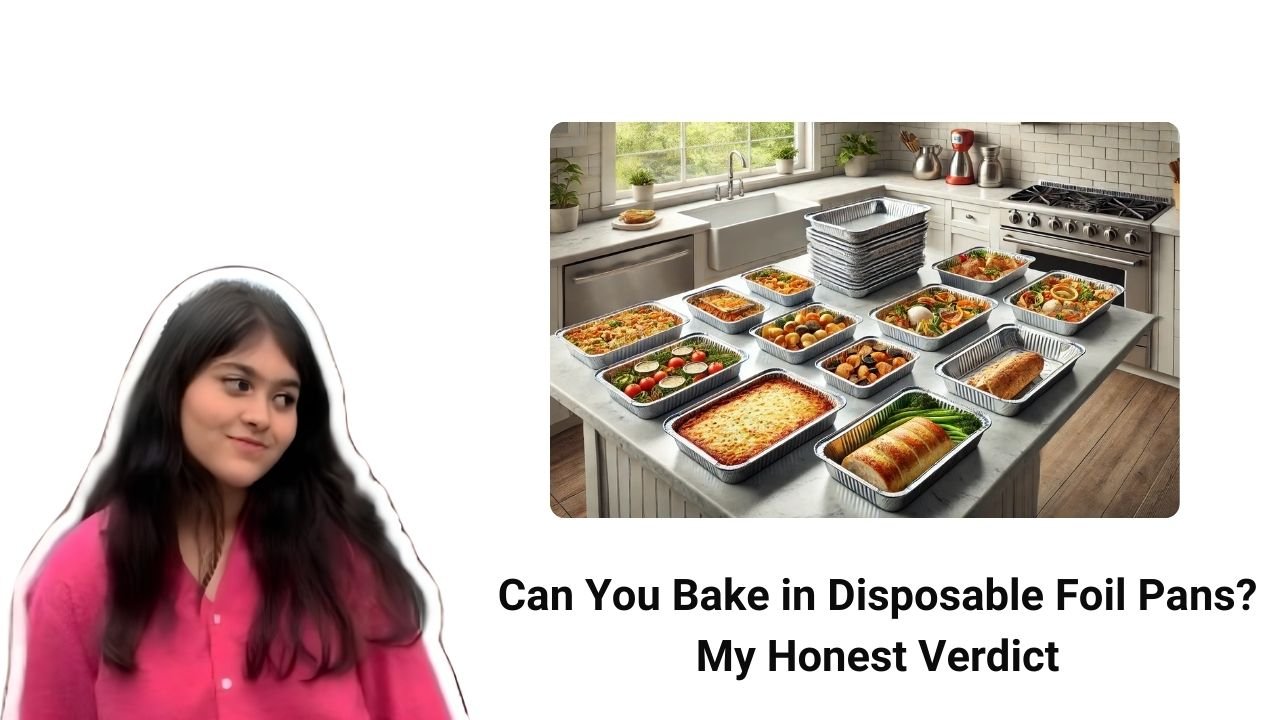Have you ever found yourself in the middle of prepping for a birthday party, potluck, or holiday dinner and thought, “Can you bake in disposable foil pans?” Trust me, you’re not alone. I’ve had those moments too—frantically scanning my kitchen cabinets, only to find that all my regular bakeware is either already in use or buried under a mountain of dishes. That’s when those shiny, lightweight foil pans from the store start to look like the heroes we never knew we needed.
In this article, I’ll walk you through my honest verdict on using disposable foil pans for baking. I’ll share real-life experiences, practical tips, and what works—and what doesn’t. Whether you’re baking a birthday cake, a gooey lasagna, or a dozen cupcakes for a school event, you’ll know exactly when these pans can be your best friend, and when to reach for the trusty glass or non-stick set instead.
Why I Gave Disposable Foil Pans a Try
Let’s rewind a little. A few years ago, I was preparing a big holiday meal for family and friends. I was short on time, short on pans, and very short on patience. So, while doing a last-minute grocery run, I tossed a few disposable aluminum foil pans into my cart. I figured, Why not? Worst-case scenario, I lose a few brownies. Best-case, I save myself a sink full of dishes.
That decision turned out to be a small game-changer.
Not only did the brownies come out beautifully, but cleanup was also non-existent. I literally tossed the pan after everyone had devoured the dessert. Since then, I’ve used them for cakes, casseroles, breads, and even cinnamon rolls. But I’ve also learned that while they’re super handy, they’re not perfect for every baking need.
Let me explain how and when you should use these pans—and when you might want to think twice.
Heat Conductivity: Quick and Even, But Sometimes Tricky

One of the biggest advantages of disposable foil pans is their excellent heat conductivity. Aluminum heats up fast and spreads the heat evenly, which helps ensure your baked goods cook through without cold spots. That’s why they’re perfect for things like banana bread or brownies that benefit from uniform baking.
But here’s where it gets a little tricky: because they heat up so quickly, they can also cook your dish faster than expected. That means if your recipe calls for 40 minutes of baking in a glass dish, it might only need 35 minutes in a foil one.
Personal tip: Always start checking for doneness 5-10 minutes earlier than the recipe suggests when using foil pans. I’ve made the mistake of burning the bottom of a loaf cake because I didn’t make this adjustment.
Key Insight: Can you bake in disposable foil pans? Absolutely—but you may need to tweak your baking time.
Convenience and Cleanup: A Dream for Busy Bakers
I can’t tell you how many times disposable foil pans have saved my sanity after a big family dinner or bake sale. When you’re making multiple dishes and juggling a dozen things at once, the last thing you want is a sink full of greasy pans.
That’s where these pans shine. They’re the ultimate cleanup hack.
Here’s why I love them:
- No washing required—just toss them after use.
- Lightweight and easy to carry (especially when you’re baking in bulk).
- Great for transporting food to events or gifting baked goods.
- You don’t have to worry about getting your good bakeware back.
When I baked for my daughter’s school fundraiser, I used disposable aluminum pans for everything. I made 4 sheet cakes, 3 casseroles, and a couple of trays of cookies. After the event, I walked out with empty hands and zero cleanup waiting for me at home.
But keep in mind: They’re meant to be disposable. Reusing them can lead to warping or uneven baking results.
Versatility: More Than Just Cake Pans

Think disposable foil pans are only good for baking cakes? Think again. I’ve used them for everything from casseroles to baked ziti to roasted vegetables. They come in all shapes and sizes, so there’s a foil pan for just about every dish you can imagine.
Here’s a quick table of common disposable aluminum foil pan sizes and what they’re best for:
| Pan Size | Best For |
| 9×13 inch rectangular | Cakes, brownies, lasagna |
| 8-inch round | Layer cakes, cheesecakes |
| Mini loaf pans | Banana bread, gift loaves |
| Muffin trays | Cupcakes, muffins |
| Large deep trays | Roasts, casseroles, stews |
These pans are especially helpful for batch cooking or meal prepping. When I hosted a family reunion, I made individual lasagna portions in mini aluminum pans—easy to serve, easy to store, and no one had to fight over the last piece!
Temperature Limits: Safe, but Know the Boundaries
Now, let’s talk safety. A common question I get is, “What temperature to bake cake in aluminum pan?” Good news: most disposable foil pans are oven-safe up to 450°F (232°C). That covers the majority of baked dishes.
Still, it’s smart to double-check the packaging. Not all foil pans are created equal—some may have plastic lids that can’t go in the oven, and others might be thinner, which could warp under high heat.
When I bake bread at high temperatures (like 425°F), I make sure the pan is placed on a sturdy baking sheet to give it extra support and prevent bending. This is especially important if you’re baking something heavy or liquid-based, like a deep dish quiche.
Pro tip: Never put disposable foil pans directly on the oven rack. Always place them on a tray to keep things stable.
Not Always Ideal: When You Should Use Traditional Bakeware

Now, let me be totally honest. While I love disposable foil pans, they’re not always the right tool for the job.
Here are a few times I skip them:
- For delicate crusts like a buttery shortbread or flaky pie, I stick to glass or ceramic. Foil pans can over-bake or crisp the edges too quickly.
- When precise timing matters—like soufflés or chiffon cakes—I go for my trusty non-stick bakeware. The heat control in foil pans isn’t as consistent.
- If I plan to reuse the pan. These are meant to be disposable. Washing and reusing them can cause bending, warping, and poor performance.
I once tried baking a homemade tart with a graham cracker crust in a disposable foil pan. The edges browned too fast while the center was still undercooked. Lesson learned: use them for sturdy bakes, not delicate showpieces.
Can We Bake Cake in Aluminium Foil Tray? Absolutely—With a Few Smart Adjustments
Now, here’s a question I get a lot: Can we bake cake in aluminium foil tray? The answer is a resounding yes—but there are a few things you’ll want to do to get the best results.
Aluminum foil trays can be a fantastic shortcut when baking cakes, especially if you’re baking in bulk or need something disposable for a party. But unlike traditional pans, they’re more flexible and thinner, which means they transfer heat more quickly and might not hold their shape as well under the weight of the batter.
Here’s how to get it right:
- Grease the pan well. Foil pans don’t have non-stick coatings, so a generous coat of butter or cooking spray is essential.
- Use a baking sheet. Always place the foil pan on a sturdy tray before putting it in the oven. This helps prevent bending and makes it easier to remove from the oven safely.
- Monitor the bake time. Cakes may bake a little faster in foil pans, so check with a toothpick 5 minutes before the recipe says it should be done.
I once made a chocolate sheet cake in a 9×13 foil pan for a friend’s birthday, and it came out beautifully moist with a slight crisp edge. I cooled it in the same pan, frosted it right over the top, and handed it off—no cleanup, no plate-returning hassle.
Note: If you’re wondering how long to bake cake in aluminum pan, the general rule is the same as regular pans, but start checking 5–10 minutes early. Every oven is different, and foil pans can accelerate browning.
Tips for Baking in Disposable Aluminum Pans: What You Need to Know
If you’re new to baking with foil, it helps to go in with a few tricks up your sleeve. Here are my favorite tips for baking in disposable aluminum pans:
- Double-stack for insulation: If the pan is too thin or feels flimsy, place one foil pan inside another. This helps prevent overbrowning and gives better structural support.
- Cool in the pan: Removing a delicate cake from a foil pan can lead to tearing. Just let it cool completely in the pan and serve it as is. It’s easier and safer.
- Wrap edges for sensitive bakes: If you’re baking something with a delicate crust or edge (like cheesecake), wrapping the edges of the pan with foil or using a crust protector can prevent burning.
- Don’t broil in them. If you’re asking, “Can you broil in a disposable aluminum pan?”—the answer is usually no. Broilers emit intense direct heat, and thin foil can buckle, burn, or even catch fire under extreme temperatures. Always read the manufacturer’s instructions.
I once tried to broil garlic bread in a foil tray and ended up with charred edges and a smoky kitchen—not fun.
Can You Cook in Aluminum Foil Pans on the Stove? Please Don’t.
This is something that needs a little clarity: Can you cook in aluminum foil pans on the stove? The answer is no, and here’s why.
Foil pans are designed for oven use only. They’re thin and flexible, and most lack the heat tolerance needed for direct contact with stovetop burners. If you try using them on a gas or electric stove, they’ll warp, melt, or even catch fire.
If you need something lightweight and disposable for the stove, consider heat-safe aluminum pots or portable cooking foil trays that are specifically labeled as stovetop-safe. But for baking and reheating, the oven is your best bet.
Bottom line: Keep foil pans in the oven where they belong. The stove is not their friend.
When to Reach for a Disposable Foil Pan (And When Not To)
After baking with foil pans dozens of times, I’ve developed a mental checklist of when they’re ideal and when they fall short. Here’s what I’ve learned from experience:
Use foil pans when:
- You’re cooking for a crowd (think potlucks, bake sales, or parties).
- You want to skip dishwashing.
- You’re baking sturdy items like brownies, casseroles, or loaf cakes.
- You’re gifting food and don’t want your favorite baking dish to disappear.
Avoid foil pans when:
- You’re making a recipe that needs precise heat control (soufflés, tarts, etc.).
- The crust is delicate and prone to overbaking.
- You need a pan that can be reused many times.
- You’re looking to get a professional finish or presentation.
A friend of mine once used a foil pan to bake a fruit tart for a wedding dessert table. While it tasted amazing, the uneven browning and slightly warped edges made it hard to serve neatly. Lesson learned: for presentation-perfect bakes, stick with your standard bakeware.
Disposable Foil Pans vs. Traditional Bakeware: A Quick Comparison
To make it even easier, here’s a simple comparison table to help you decide between foil pans and traditional bakeware depending on the occasion:
| Feature | Disposable Foil Pans | Traditional Bakeware |
| Cleanup | Toss after use | Requires washing |
| Cost | Cheap and accessible | Higher initial cost |
| Reusability | Single-use | Reusable for years |
| Presentation | Casual, informal | Polished, elegant |
| Heat Control | Quick, sometimes uneven | More stable and consistent |
| Best for | Events, bulk baking, travel | Delicate or everyday baking |
It’s not about one being better than the other—it’s about choosing the right one for the right moment. I love using foil pans when I’m in “feed everyone fast” mode, and I switch to glass or ceramic when I want to savor the art of baking.
Final Verdict: Can You Bake in Disposable Foil Pans? My Honest Verdict
So, let’s bring it home. Can you bake in disposable foil pans? My honest verdict: absolutely, yes—just not for everything.
They’re convenient, affordable, and surprisingly effective for many recipes. For busy parents, beginner bakers, party hosts, or anyone baking in batches, they’re a total win. But for recipes that demand precision, careful temperature control, or picture-perfect crusts, traditional bakeware will always do a better job.
I still keep a stack of disposable foil pans in my pantry at all times. They’ve saved me in last-minute dinner situations, school events, and lazy Sundays when I wanted brownies without the cleanup. Just remember the golden rule—adjust your baking time, use a baking sheet underneath, and know their limits.
Thanks for baking along with me! I hope this guide helps you use disposable foil pans like a pro. Whether you’re baking for one or fifty, there’s always a smart way to make it work.

Hey, I’m Nandoza Ahammad, passionate food enthusiast and creator of narzcookingcave.com, shares delicious recipes and cooking tips worldwide.

